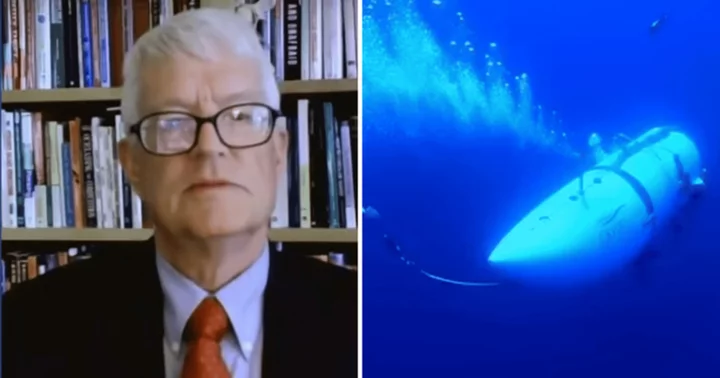NEWFOUNDLAND, CANADA: A distinguished former Navy doctor has detailed the tragic final moments of the Titanic Five, saying "they would have been ripped to shreds" after their missing submersible suffered a "catastrophic implosion". Dr Dale Molé, the former director of undersea medicine and radiation health for the US Navy, claimed that the five passengers' death would have been quick and painless due to immense forces exerted by the ocean at that depth.
US Coast Guard Rear Admiral John Mauger confirmed on Thursday, June 22 that the extensive search for Oceangate-owned Titan has yielded debris that is "consistent with a catastrophic loss of the pressure chamber". The Titan lost communication with its mothership MV Polar Prince after 4 am on Sunday, June 18, when it was taking the victims to view the Titanic shipwreck off the coast of Canada. The crew members, who died on the vessel included British billionaire Hamish Harding, French explorer Paul-Henri Nargeolet, OceanGate CEO Stockton Rush, Pakistan millionaire Shahzada Dawood and his son Suleman.
'The next millisecond you're dead'
Detailing the tragic final moments, Dr Molé told Daily Mail that the five victims would have died ‘in milliseconds’ after their vessel suffered the 'catastrophic implosion.' "It would have been so sudden, that they wouldn't even have known that there was a problem, or what happened to them," he said adding, "It's like being here one minute, and then the switch is turned off. You're alive one millisecond, and the next millisecond you're dead." The crew were more than 2 miles below the ocean surface, which would have generated more than 5,500 pounds per square inch (PSI) of pressure.
The former US Navy doctor claimed that the Titan had reached the seabed after its pressure chamber had exploded. The pressure chamber is a pressurized gas system to control the internal pressure and supply breathing gas for the occupants. "The pressure hull is the chamber where the occupants reside. It sounds as though they had reached the bottom when the pressure vessel imploded, and usually, when it gives way, it gives way all at once," Dr Mole said, claiming, "It sounds like it was the carbon fiber cylinder that gave way and resulted in the implosion."
'They would have been ripped to shreds’
Dr Mole asserted that the crew members would have been crushed due to the violent and instantaneous implosion, which apparently ripped apart the sub's hull and wrenched away the rear cover, allowing the high-pressure water outside to flood in. "They would have been ripped to shreds. An implosion is when the wave of pressure is inward, whereas an explosion is when the pressure wave or the shock wave goes out from whatever the source of that is,” the doctor said.
He compared it to over-inflating a balloon: if there is too much pressure, the balloon would ultimately explode. However, the converse happens in an implosion; when there is more external pressure than the container can handle, the interiors collapse. "When somebody stands on an empty soda can, it would support your weight, but then if you press on the sides, the can would collapse immediately," Dr Mole explained, adding, "At least at the depth of the Titanic, which is 12,500 feet, the external pressure would be 6,000 lbs per square inch. It's that pressure that, if there were a weakness in the hull, would cause the hull to collapse and suddenly creates a shockwave. An implosion can certainly be every bit of destructive as an explosion."









